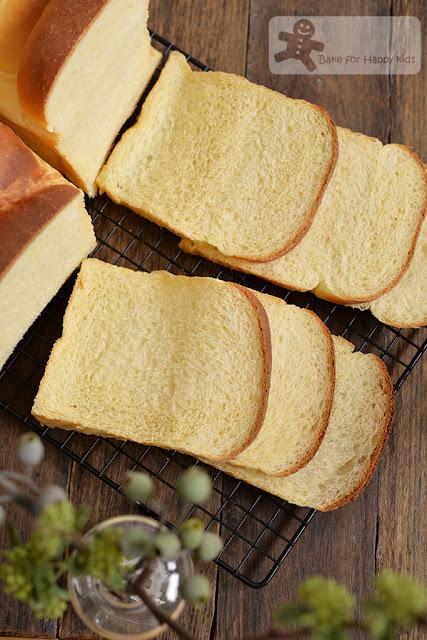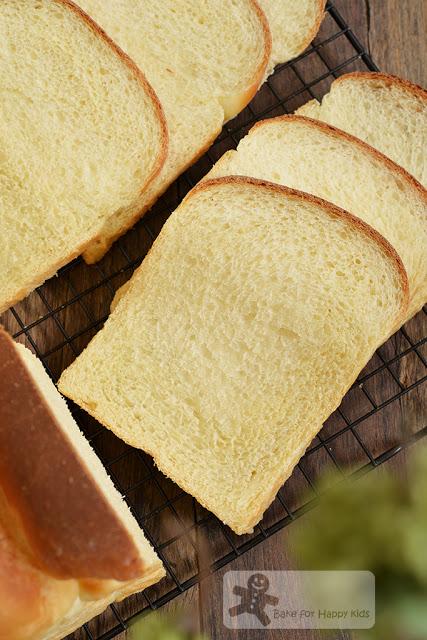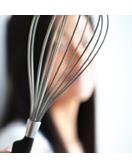Whenever I published a recipe at my blog, I always get questions asking if...
Can I substitute this ingredient with another ingredient?
Where can I buy the ingredients, tools and equipment that you are using?
Can I use this recipe to bake with something else but not oven?
Can I bake the bread using breadmaker but not the oven?
Can you calculate the amount of ingredients that I need to use if I want to bake something less or more?
Look! *sign* I've tried my very best to explain all that I know whenever I publish a recipe and I hope that you will read my posts thoroughly and try my recipes accordingly.
No doubt, there will be questions but they are mostly questions like the ones above... And, these are my typical answers.
Can I substitute this ingredient with another ingredient?
If I have tried any substitution with the recipe, I will mention in the recipe accordingly. If I don't, I can't guarantee that the proposed substitution will work because the honest me prefer any substitutions to be truly tested and tasted before I will say YES that it will work.
Nevertheless, please go ahead and try anything that you want! And, it will be nice if you can let me know if your proposed substitution has worked well or not.
Can I use this white bread recipe to bake 100% or 50% wholemeal bread?
Yes, you can but the texture of the wholemeal bread won't be obviously the same and also as good as the all-white breads. Due to my personal reasons, I'm sorry that I won't simply transform white bread recipes into wholemeal ones. I'm currently in the process of encouraging my fussy son to like wholemeal breads and food. I'm searching for soft "undetectable" wholemeal bread recipes and I hope that you will understand that this will take some time.
Can I bake this bread recipe using breadmaker but not the oven?
I get this question SO MANY TIMES whenever I publish a bread recipe and I'm so sorry to say that I DON'T KNOW!!! Different breadmaker have different settings and capacity and I won't know your breadmaker and won't know what to do with it. Some readers try to tell me their breadmaker brand and model but seriously!!! I'm sure that you can check the user manual and optimise the bake yourself.
Sometimes, baking needs trial and error... You just have try and see if it works!
So you might ask... What is my purpose of listing these FAQ? Am I frustrated, whinging or something? No! No! No! No! No! Please don't get me wrong. I'm happy to help but prefer to deal with these questions more efficiently! FYI, all of the above FAQ and my answers are at here for quick future references.
Part of the reasons why I like to mention these questions is because I like to strongly emphasis the effect of the frequently asked question one!
If you have decided to ask me if you can substitute this ingredient with another ingredient, I'm 100% sure that you have decided to do it. If I said NO, will you still do it? YES that some substitutions work but some don't. For example, this milk and egg enriched sandwich bread recipe Two is very slightly different from the recipe one that I have published at here and the texture of these breads are fluffy soft rather than spongy soft. Will explain more as you scroll further...

Proudly presenting this awesome Soft Milk and Egg Enriched Sandwich Bread Recipe Two
These soft breads are yummy because they are so fluffy soft!
What is the difference between Milk and Egg Enriched Sandwich Bread Recipe One at here and Two?
Why are these recipes so different?
One uses 400g water and Two uses 220g scalded milk plus 220g water. That's all! That is the ONLY difference!
Yet, the use of scalded milk and the extra 40g liquid can makes the soft breads rather fluffy (kind of like cottony soft) than spongy! Interesting, huh?
Why this recipe? If you examine the recipe close enough, you will see that it is actually the recipe that bakes the Japanese style bread made with Tang Zhong at here but I have used 2 1/2 tsp yeast instead of 4 tsp to bake these breads and it works beautifully!
After baking this recipe 1) with and without Tang Zhong method and 2) with more and less yeast, I have to say that the additional Tang Zhong method and the extra yeast added are really NOT necessary as I see that the fluffiness and moisture of the breads with or without Tang Zhong are not really greatly affected! That's good to know!!!

This soft milk and egg enriched sandwich bread is further enriched with milk, milk powder and eggs.

And its texture is rather fluffy cottony soft, not spongy!
Fluffy or Spongy?I have to say that both milk and egg enriched sandwich bread are equally moist and good. Recipe two is a little less straightforward than Recipe One because it requires an addition step to scald the milk and the dough will be a little more sticker due to the presence of milk proteins and extra liquid. Taste-wise, I would say that I like the fluffy bread more. And of course, convenience-wise, I would say that I like the less hassle recipe one more. You choose?Here's a video showing how I baked these milk and egg enriched breads. If you like your breads to have nice chewy crusty tops, you can brush the top of the bread dough with milk before baking. If you like your breads to have soft crust tops, you can brush the top of the bread dough with egg wash (containing 1 egg yolk with 1 tbsp milk). If you can't be bother like me (LOL!), you can choose not to do anything before baking and the breads will be a little crusty (not soft and chewy) on their tops when they are freshly baked and will soften a little by themselves when cooled completely. You choose? LOL!
Here's the recipe that is adapted from here.
Make two 10 x 20 cm loaves
220g milk, scalded and cooled slightly to lukewarm
220g water, lukewarm100g eggs, weight without the shell, at room temperature (about 2 extra-large eggs but please use the exact weight)
650g bread flour
60g caster sugar
45g milk powder
4g salt
60g unsalted butter, softened at room temperature
2 1/2 tsp instant yeast
extra butter or vegetable oil spray to grease the loaf pans
extra bread flour for dustingextra milk or egg wash (1 egg yolk plus 1 tbsp milk) or use nothing to brush loaves before baking - see the above paragraph.
If you are using a breadmaker to knead and prove, add all ingredients into the breadmaker according to this order. Use "dough" setting to mix and knead dough for 30 mins or until the dough is elastic* and allow the dough to prove for 1 hr.
If you are using an electric mixer with an hook attachment to knead, combine all ingredients except butter in the mixing bowl and mix at low speed until a soft dough forms. Then, knead in the butter until incorporated. Continue to knead at low speed for at least 25 mins or until the dough is elastic. It is important that the dough has to be elastic and stretchy*. Cover the dough and allow the dough to prove in a warm and humid place for about 1 hr or until doubled in size.
*Please note the the surface of the dough won't be silky smooth but look rather spongy.
To shape the dough into bread loaf:
Grease 10 x 20 cm loaf pans with butter or vegetable oil spray. Divide dough into into 6 equal portions. Shape each portion of dough into smooth balls. Allow them to rest at room temperature for about 10 mins.Using a lightly floured rolling pin, roll each portion into long and flat oval shape (about 20 cm) on a lightly floured non-stick surface. Use your fingers to pick one shorter side of the dough and tuck and roll the dough like a Swiss roll. Use the rolling pin to flatten and roll the dough into a long rod shape. Then, pick one shorter side of the dough and roll it like a Swiss roll again. Repeat this rolling step with the remaining portions of dough.
Place three rolled dough with their seams side down into the each prepared pan. Press the top of the dough lightly to form an even surface. Allow the dough to prove in a warm and humid place for another 1 hr or until the dough is going to reach the maximum height of the loaf pan.
Brush the top of the dough with either milk, egg wash or nothing. Bake bread in preheated 180°C (350°F) oven for 23-25 mins or until thoroughly baked. Cover the top of the breads very loosely with foil if the tops turn brown too quickly after baking for 15-20 mins and continue to bake until thoroughly baked. Remove breads from the loaf pans and transfer immediately onto a wire rack to cool completely before slicing and serving.
To store, wrap tightly in plastic wrap and keep at room temperature for 2-3 days or freeze in serving portions for 2-3 months.
Happy BakingPlease support me and like me at Facebook...

